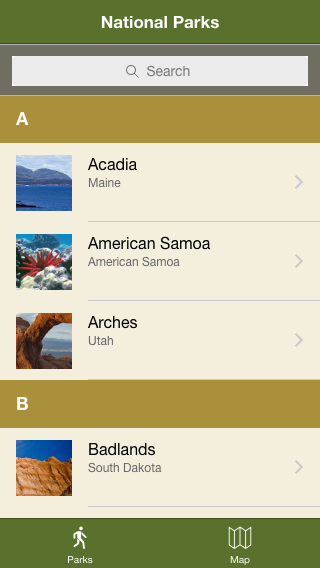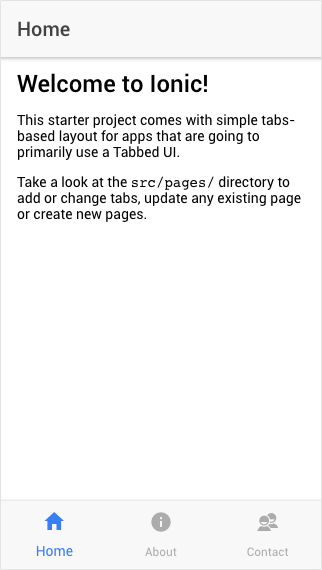Chapter 8. Building a Tab-Based App
A very common type of application you might build is one that uses a tab-based navigation system. This design pattern works very well when you have a limited number (five or fewer) of groups (or tabs) of content. We are going to use this design pattern to create an app that will allow you to explore the various United States National Parks (in honor of them celebrating their centennial in 2016). Figure 8-1 shows what our final app will look like.
We are again going to use the Ionic CLI to scaffold our application. First, create a new directory that we will be building from. I named my directory IonicParks:
$ ionic start IonicParks
Since we are going to be creating a tabs-based app, we did not need to pass in a template name, since the tab template is the default.
Next, change your working directory to the newly created IonicParks directory:
$ cd IonicParks
Now let’s explore the template itself (Figure 8-2) before we get down to business:
$ ionic serve

Figure 8-1. The completed Ionic national parks app

Figure 8-2. Ionic tabs template
Not a lot here, but we can navigate between the three tabs (named Home, About, and Contact), and see the content change.
Taking a look inside the app.module.ts file, we see that instead of importing one page, ...
Get Mobile App Development with Ionic, Revised Edition now with the O’Reilly learning platform.
O’Reilly members experience books, live events, courses curated by job role, and more from O’Reilly and nearly 200 top publishers.

